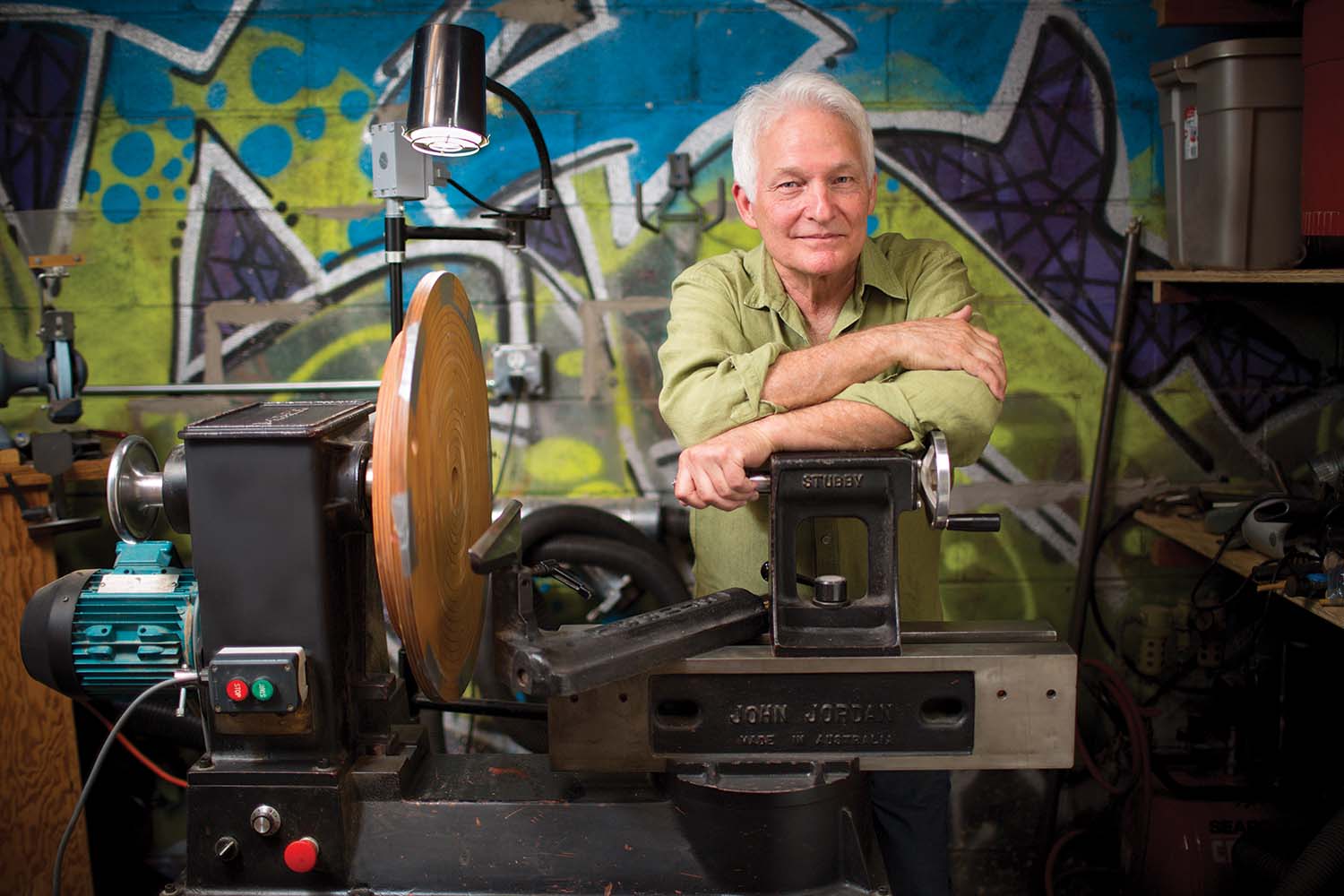
Portrait by Matt Rose
Sixteen years ago, Darrell Copeland witnessed a woodturning demonstration. Prior to that, he had studied drawing at New Orleans Academy of Fine Arts, apprenticed with stone carver Beatrice Hill, and envisioned for himself a career carving stone. All of a sudden, his focus shifted.
“I don’t remember the name of the demonstrator, but the moment he began to shape a chunk of wood into a form, I was hooked. I knew I wanted to experience the pace and energy that [wood]turning offered.”

His previous experience was essentially limited to sawing two-by-fours, but it didn’t matter — Copeland threw himself into a new world, attending monthly meetings of Carolina Mountain Woodturners, enrolling in private classes, and taking courses at John C. Campbell Folk School.
He learned the processes of hand and power carving, staining, painting, scorching, and burning forms. “Initially, my interest was to embellish my work with color and texture, but I realized I wanted to say more.” While creating his first wall installation, an abstract painted-block assemblage, “it all came together,” he says.
Since then he has created several other series and many one-of-a-kind pieces. “I tend to work in an exploratory method — taking an idea to completion by drawing on the skills and knowledge needed to create it, and then playing with new ways to implement the processes.”

But he never really knows what might trigger the next idea. “One of my most successful pieces, and the start of a new series, came from driving through a curve one night to face head on a full orange moon dropping down over a mountain ridge.”
A tale of bullying provided another motif. “I had just heard a story of a girl dealing with peer rejection,” he recalls. He focused on four previously turned vessels sitting on a shelf. “I placed them in a staged arrangement where three were huddled together and one was off to the side, tilted toward them. It was surreal. I just couldn’t help feeling bad for the little guy.” Realizing their “potential to narrate the story,” he created a textured base with two rings, one for the group of three and one for the lone form.
He thinks hard about his ideas, but he doesn’t sit on them long. “I may do a rough sketch, but [more] often I will grab a handful of soft clay and quickly form the general shape. It’s low tech — but it’s usually enough to anchor my concept.”

Darrell Copeland, studio visits by appointment at Foundation Woodworks (17 Foundy St. in the River Arts District). Copeland’s work is also sold at the Southern Highland Craft Guild gallery in Biltmore Village (26 Lodge St.) and at Grovewood Gallery (111 Grovewood Road, next to the Omni Grove Park Inn). For more information, visit darrellcopeland.com or e-mail darrell@darrellcopeland.com. (On Instagram: @darrellcopelandstudio)